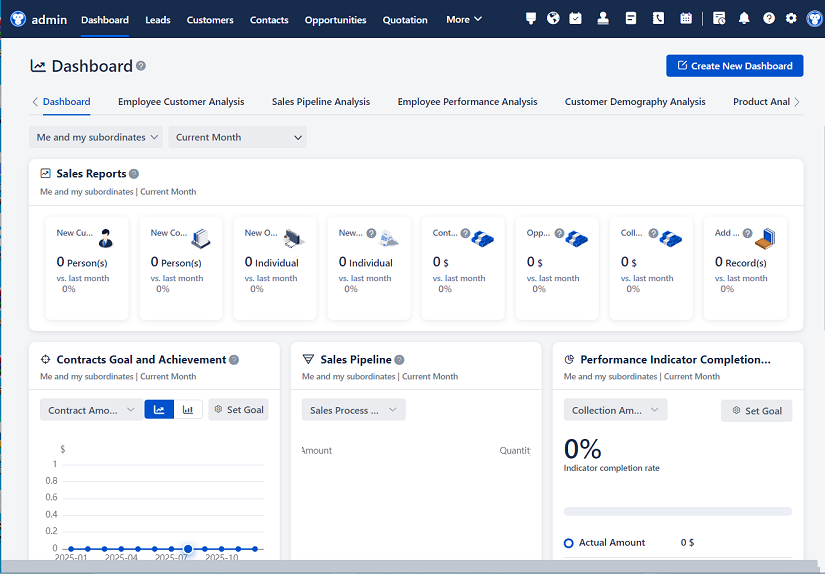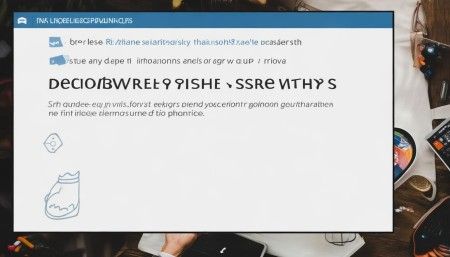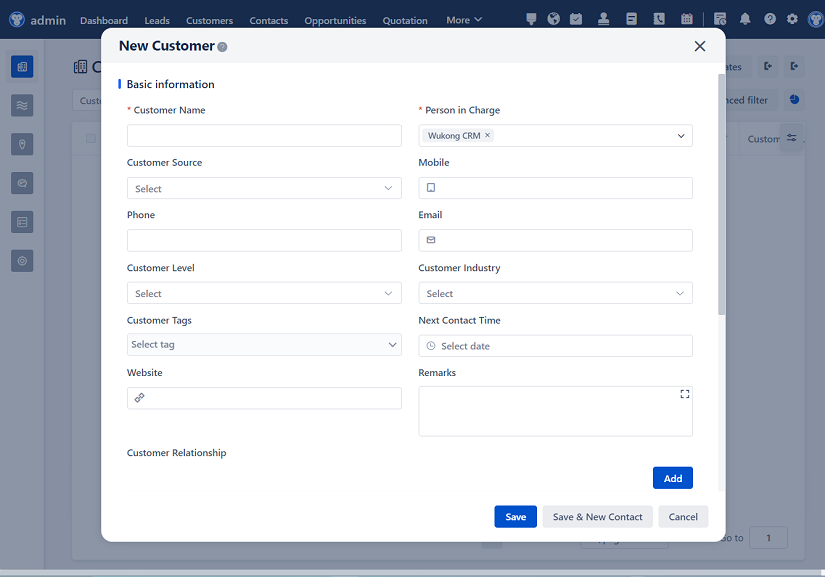
△Click on the top right corner to try Wukong CRM for free
Hey there! So, you're thinking about getting a CRM for your design company, huh? That's a great idea. Let me tell you, in today's fast-paced world, having the right tools can make all the difference. I mean, we're not just talking about keeping track of clients and projects; it's about building relationships, streamlining processes, and making sure everyone on your team is on the same page.
First things first, let's talk about what a CRM actually is. It stands for Customer Relationship Management, and it's basically a system that helps you manage your interactions with current and potential customers. Think of it as a digital Rolodex, but way more powerful. You can store all sorts of information about your clients, from their contact details to their project history, and even their preferences. It's like having a personal assistant who never forgets anything!

Now, why would a design company need a CRM? Well, for starters, designers are creative people, and they often have a lot on their plates. From brainstorming new ideas to meeting tight deadlines, it can be easy to lose track of the little things. But those little things—like following up with a client or remembering their favorite color—can make a big difference in how they perceive your business. A CRM helps you stay organized and ensures that no detail slips through the cracks.
Let me give you an example. Imagine you're working on a rebranding project for a client. You've had several meetings, exchanged countless emails, and made a bunch of revisions. Now, if you're like most people, you might have all this information scattered across different platforms—your email, your notes app, maybe even some sticky notes on your desk. But with a CRM, everything is in one place. You can see the entire history of your interactions with the client, including all the emails, notes, and even the files you've shared. It's like having a bird's-eye view of the whole project, and it makes it so much easier to keep everything straight.
Another thing to consider is that design companies often work with a variety of clients, each with their own unique needs and preferences. Maybe one client loves bold, vibrant colors, while another prefers a minimalist, monochromatic look. Keeping track of these details can be a challenge, especially when you're juggling multiple projects at once. But with a CRM, you can create detailed profiles for each client, noting their preferences, past projects, and any other relevant information. This way, you can tailor your approach to each client, making them feel valued and understood. And let's face it, happy clients are more likely to come back and recommend you to others.
But wait, there's more! A good CRM isn't just about managing client information; it's also about streamlining your internal processes. For instance, many CRMs come with features like task management, calendar integration, and even project tracking. This means you can assign tasks to team members, set deadlines, and monitor progress all within the same platform. It's like having a project management tool and a CRM rolled into one. No more jumping between different apps or trying to remember where you left off. Everything is right there, in one convenient place.
And speaking of teams, collaboration is key in the design industry. Whether you're working with a small team or a large one, effective communication is essential. A CRM can help by providing a centralized hub for all your team's communications. You can share files, leave comments, and even have real-time discussions, all within the CRM. This not only saves time but also reduces the risk of miscommunication. Plus, it's a great way to keep everyone in the loop, even if they're working remotely. In today's world, where remote work is becoming more common, having a tool that supports seamless collaboration is a huge plus.
Now, I know what you might be thinking: "This all sounds great, but what about the cost?" Well, I get it. Budgets are always a concern, especially for small businesses. But here's the thing: investing in a good CRM can actually save you money in the long run. How, you ask? Well, for one, it can help you reduce the time and effort spent on administrative tasks. Instead of manually entering data or searching through old emails, you can focus on what you do best—creating amazing designs. And as we all know, time is money. The more time you save, the more you can dedicate to billable hours or new projects.
Moreover, a CRM can help you identify and nurture high-value clients. By analyzing your client data, you can see which clients are bringing in the most revenue and which ones have the potential to grow. This allows you to prioritize your efforts and focus on the clients that matter most. You can also use the CRM to track your sales pipeline, from initial contact to closing the deal. This gives you a clear picture of where your business stands and helps you make informed decisions about where to allocate your resources.
But let's not forget about the customer experience. In the design industry, it's not just about delivering a great product; it's also about providing a great service. A CRM can help you deliver a personalized and seamless experience for your clients. For example, you can set up automated reminders to follow up with clients after a project is completed, or send them a thank-you note on their birthday. These small touches can go a long way in building strong, lasting relationships. And in a competitive market, those relationships can be the key to your success.
So, now that you know why a CRM is so important for design companies, let's talk about how to choose the right one. There are a lot of options out there, and it can be overwhelming. But don't worry, I'm here to help. First, think about your specific needs. What features are most important to you? Do you need robust project management tools, or are you more focused on client communication? Make a list of your must-haves and nice-to-haves, and use that as a guide when evaluating different CRMs.
Next, consider the size of your team and the complexity of your projects. Some CRMs are better suited for small teams, while others are designed for larger, more complex organizations. If you have a small team, you might want something simple and user-friendly. On the other hand, if you have a larger team with multiple departments, you might need a more advanced CRM with features like role-based access and custom workflows.
Another important factor is integration. Chances are, you're already using a variety of tools and platforms in your business, from email and calendar apps to design software and accounting systems. A good CRM should integrate seamlessly with these tools, allowing you to streamline your workflow and avoid duplicating efforts. Check to see if the CRM you're considering integrates with the tools you already use, and if not, whether there are any workarounds or third-party integrations available.
Of course, budget is always a consideration. While it's tempting to go for the cheapest option, remember that you get what you pay for. A good CRM is an investment in your business, and it's worth spending a little extra to get the features and support you need. Many CRMs offer different pricing tiers, so you can start with a basic plan and upgrade as your business grows. Some even offer free trials, so you can test out the CRM before committing to a long-term subscription.

Finally, don't forget to read reviews and ask for recommendations. Other design companies have likely faced similar challenges and can provide valuable insights into which CRMs work best for their needs. You can also reach out to the CRM providers directly and ask for a demo or a trial. This will give you a chance to see the CRM in action and decide if it's the right fit for your business.

Alright, I hope that gives you a good overview of why a CRM is so important for design companies and how to choose the right one. But I know you might still have some questions, so let me answer a few of the most common ones:

Q: Can a CRM really help with project management, or is it just for client communication? A: Absolutely, a CRM can help with both! Many CRMs come with built-in project management tools, allowing you to assign tasks, set deadlines, and track progress. It's like having a project management tool and a CRM in one, which can be a huge time-saver.
Q: Is a CRM difficult to set up and use? A: It depends on the CRM, but many modern CRMs are designed to be user-friendly and easy to set up. Most providers offer tutorials, support, and even onboarding services to help you get started. And once you're up and running, you'll find that a CRM can actually simplify your workflow and make your life easier.
Q: How much does a CRM typically cost? A: The cost of a CRM can vary widely depending on the features and the size of your team. Some CRMs offer free plans with basic features, while others can cost hundreds or even thousands of dollars per month for more advanced features. It's a good idea to shop around and compare prices, and remember that many CRMs offer discounts for annual subscriptions.
Q: Can a CRM help with marketing and lead generation? A: Yes, many CRMs include marketing and lead generation tools. You can use them to track leads, send targeted emails, and even automate your marketing campaigns. This can be a great way to nurture potential clients and turn them into loyal customers.
Q: Is a CRM secure? A: Security is a top priority for most CRM providers, and they take steps to protect your data. Look for CRMs that offer features like encryption, two-factor authentication, and regular security updates. It's also a good idea to check the provider's privacy policy and terms of service to ensure they meet your standards.

I hope this helps, and if you have any more questions, feel free to reach out. Good luck with your CRM journey, and I'm sure it will make a big difference in your design business!
Related links:
Free trial of CRM
Understand CRM system
AI CRM Systems

△Click on the top right corner to try Wukong CRM for free